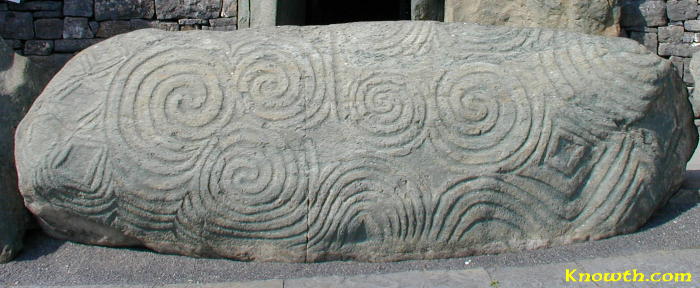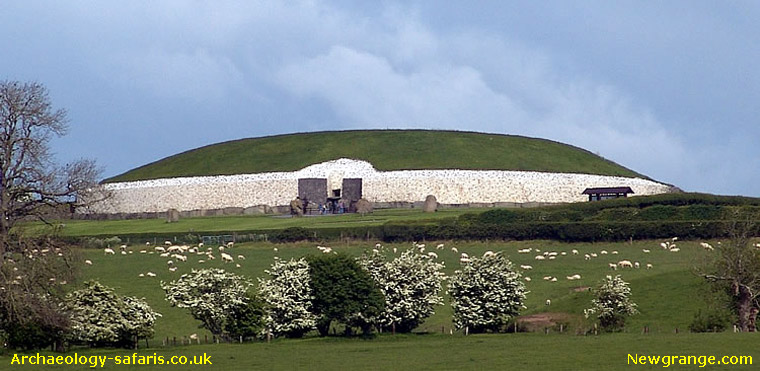
UNESCO has designated Newgrange as a World Heritage Site, so do thousands of visitors every year who appreciate its mystifying pre-historic monuments that define a momentous period in European pre-history as early as 3200 B.C.
Known as a passage tomb, Newgrange is a well-constructed passage that leads to cremated remains of the dead. The passage is covered by a large mound and is retained at the base using large kerbstones. One can only imagine the hard work that went into the construction of the passage.
The most famous of the three large monuments built along the River Boyne, Newgrange is believed to be fairy mounds in mythology. It is particularly known as the home of the god of love, Oenghus. The other two monuments are Knowth and Dowth. With its mystifying air, these mounds captivate the visitor with its air of mystery. It was in 1699 when the passageway received considerable attention with its rediscovery. The people removed some materials in order to use them to build roads. It was then when the entrance was rebuilt using the same stones in the site. Originally, however, the entrance was made of sparkling white quartz.
The passageway in Newgrange is less than 60 feet long and you’ll see a chamber with three side recesses. With a closer look at the chamber’s roof – you’ll see that a corbelled vault was used for it. This has remained intact without conservation or repair.
Do not miss a trip to the Newgrange chamber. Its tri-spiral design is a sight to behold. Not only is it considered a well-known Celtic design, but it is also known as a Megalithic symbol of the Irish. It is much smaller than the tri-spiral design found on the stone at the chamber’s entrance, but it looks quite more intricate, and nonetheless, amazing. Visit Newgrange and get firsthand experience of the finest achievements of European Neolithic art.

Newgrange

No comments:
Post a Comment
Feel free to place you thoughts here